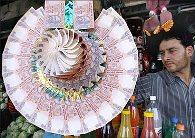 | « Back to article | Print this article |
 At least two distinguished columnists of this newspaper, former chief economic advisor to the government of India, Shankar Acharya, and Arvind Subramanian, senior fellow at the Peterson Institute for International Economics, Washington DC, have sounded the alarm on the management of India's external economy in their columns published during the last fortnight.
At least two distinguished columnists of this newspaper, former chief economic advisor to the government of India, Shankar Acharya, and Arvind Subramanian, senior fellow at the Peterson Institute for International Economics, Washington DC, have sounded the alarm on the management of India's external economy in their columns published during the last fortnight.
The rupee's steady appreciation in recent weeks, against the dollar, both in terms of the nominal and real effective exchange rate, and the steady rise in the current account deficit (CAD) in India's balance of payments, have been the objects of their shared concern.
The latest balance of payments data released by the Reserve Bank of India (RBI) last week indicate that the CAD in fiscal 2010-11 could be anywhere between 3.5 and 4.0 per cent of gross domestic product (GDP).
The official view is less alarmist, with expectations that CAD could be contained at around 3.0 per cent of GDP, given indications that GDP is likely to grow at rates higher than forecast so far.
Though the RBI has so far kept mum on both concerns, that is rupee appreciation and rising CAD, the chairman of the prime minister's economic advisory council, C Rangarajan, told the media last week that the CAD was within manageable limits.
He went a step further to allay fears raised by both Dr Acharya and Dr Subramanian regarding the surge in capital inflows, stating that "the inflow has not reached a level that demands corrective action".
In that clarification lies the warning that when inflows reach such a level, corrective action will follow. Dr Acharya (BS, 23/09/10), who believes that the CAD is likely to climb to 4.0 per cent of GDP, has in fact argued in favour of active exchange rate intervention, "of the kind successfully pursued in 2003-2007".
Adding his voice to this cause, Dr Subramanian (BS, 29/09/10) expressed concern that rather than discouraging capital inflows, the RBI was encouraging them with its announcement last week liberalising foreign inflows into domestic government and corporate bond markets.
The celebration last week of the Indian stock market's new bull run has blinded observers to the fact that much of this surge has come from a diversion of hot flows by foreign institutional investors from markets that have been discouraging such investment.
Sure, the India growth story looks good and there are many good reasons for investors to be putting their money in India. However, India's macroeconomic authorities must ensure that the money that is flowing in is not going to flow out too easily. It is better to get more enduring inflows, even if they are not as voluminous, than whimsical ones that may leave overnight and needlessly disrupt markets.
The message from the latest data on external trade and capital flows is that the time has perhaps come to sit up and take notice.
Some of the surge in imports may be on account of defence imports, and some may have been spurred by a revival of investment activity, but with export growth remaining weak, it would not be advisable for India to increase its dependence on short-term capital inflows.